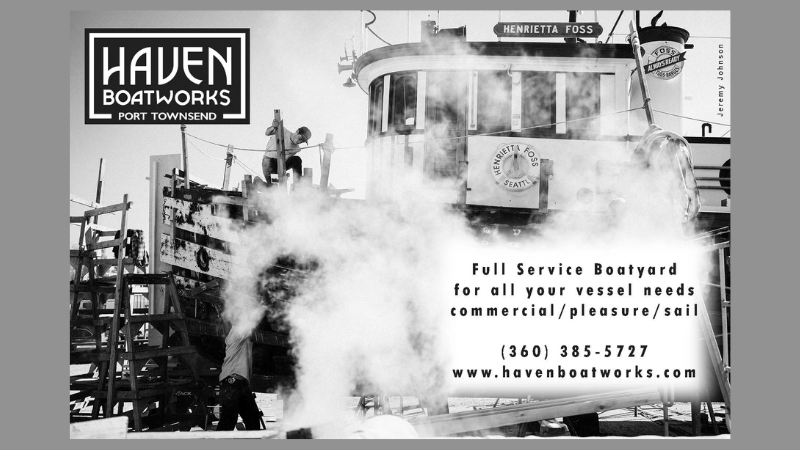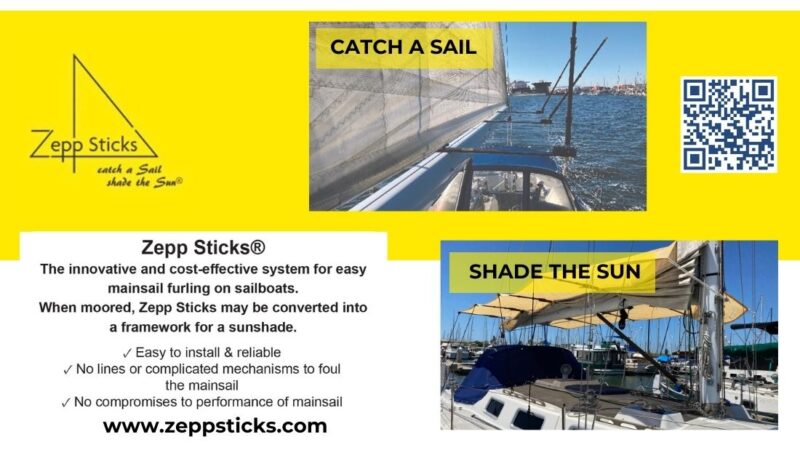
Picture-Perfect Start to Island Yacht Club’s Midwinters
Island Yacht Club’s Island Days midwinter series got off to an exciting start on Sunday, November 10.
As skippers began to check in via radio, some questioned if they’d make the start in the very light wind conditions. Twenty-eight boats registered for the race, and they all made it. The wind shifted and began to pick up right at the start. There was a bit of bumper-boat action providing a rocky start for some, but not the Columbia 5.5s.
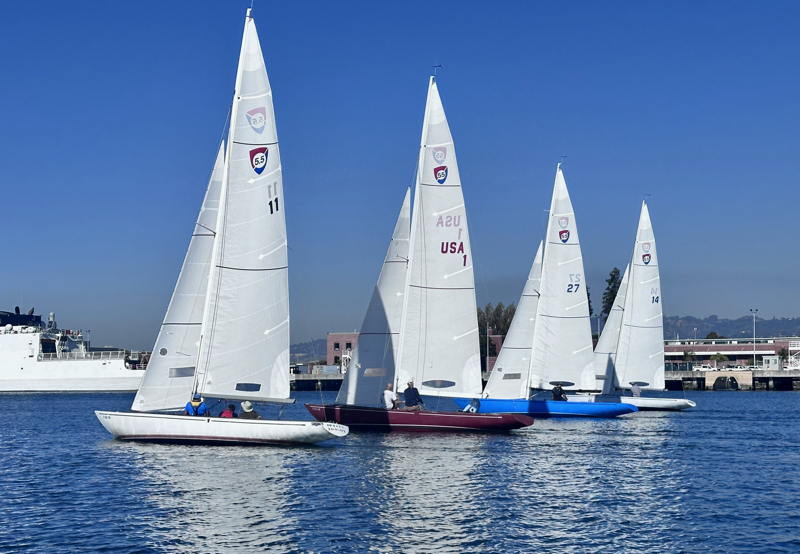
Having been towed up the Estuary by EYC’s rear commodore, Brent Draney, they arrived in unison. We joked that he’d brought the wind with him as the start flag began to sway in the breeze.
Roja (Sail #1) skippered by Chris Davis, Italia (Sail #11) skippered by Javier Jerez, Maverick (Sail #14) skippered by Ken Bodiley, and Rogue (Sail #27) skippered by Ryan Nelson were all a sight to see! With a few tacks and maneuvers back and forth they prepared for their start. The horn blew and they were off, a picture-perfect start to kick off the series, leaving the race committee in awe.
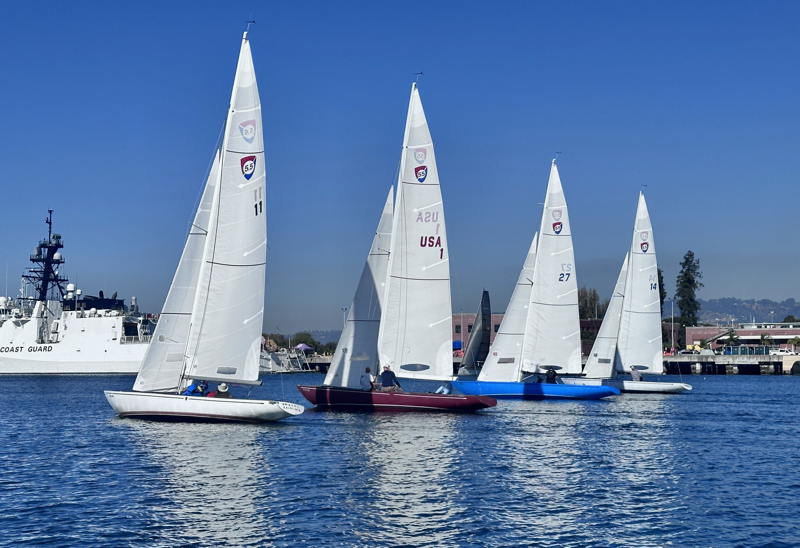
Island Days midwinters continue the second Sunday of each month through the winter. At the finish it was Chris Davis on Roja in first, Ken Bodiley on Maverick in second, Ryan Nelson on Rogue in third and Javier Jerez on Italia in fourth. You can see full midwinter reslts here.
Author Eileen Zedd is a former commodore of Island Yacht Club and the harbormaster at Alameda Marina.
Making Sailing Happen with Asociación de Vela in Ensenada
For 20 years, a dedicated group of parents and coaches in Ensenada have been teaching kids to sail and race in a fleet of donated boats and equipment. They’ve been producing incredible results and growing both youth and adult sailing. But as a grassroots, shoestring-budget organization, they need a little help from the community.
The Asociación de Vela de Baja California, A. C., (translation: Baja Sailing Association) has been operating out of Hotel Coral y Marina on the weekends for two decades. They have about 20 kids at any given time, with ages ranging from 6 to 23 years old. “It was founded in 2004 by my aunt Cristina Sánchez and Dr. Manuel Vélez, and I started sailing there as a kid — I was 10 years old in an Optimist,” said Jorge Kornegay, one of the lead organizers. Jorge told us that the governor of Baja California gave the association 10 Optis at its inception.
“That first year, we went to the Nationals,” Jorge told us. “We have to go a very long distance to compete, and it costs a lot of money to get the boats there. The kids don’t have their own boats — we give them them the hull and rigging.” In May, at this year’s Conade National Games in Puerto Vallarta, the kids reached a milestone. “We never won until this year — when we took two medals,” Jorge said.
“But we need all the support we can get.”
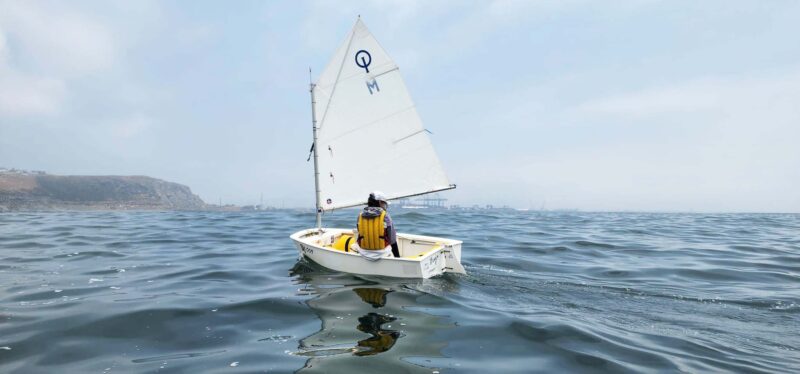
“We took these kids to Nationals, and their boats broke every single day,” said Ed ‘Frondo’ van Os. “Luckily I was there, on the water, and able to repair boats in time for them to continue the race. But one girl almost lost what could have been a gold medal because her boat broke in the last race. The fact is, we don’t have much equipment.”
Frondo — who is my cousin — is the perfect person to perform spontaneous repairs on old equipment. He has been making Mexicats, commercial-grade, custom-built catamarans, in Ensenada for over 10 years. He’s a born improviser who can make any boat work with any part. And Frondo’s 17-year-old son León has sailed with Asociación de Vela nearly his whole life.
It is not uncommon to see a 9-ft Hobie Holder Hawk with a Sabot sail and rig, and other unconventional combinations, sailing between the slips at Hotel Coral y Marina, and out on All Saints Bay.
You do what you can to make it work.
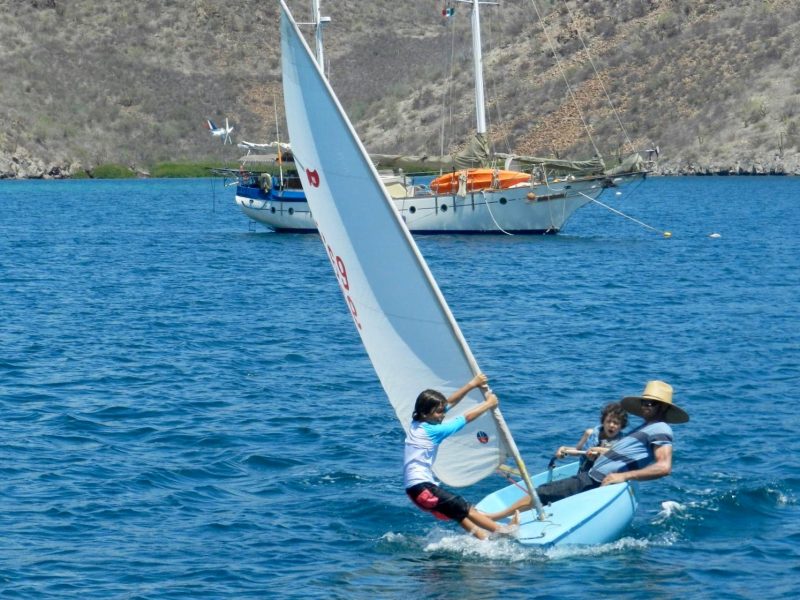
Asociación de Vela has relied on donations, and the community has come through. “We now have 10 Lasers,” said Jorge. “We are supported with the help of many parents, and people in our community have given us time on big boats like J/24s and Catalinas.
“There is a lot of support out there. We’re a community. They help us with regattas. Frondo was a big help. He got us Lasers — he has contacts in California and he got them for free.”
Before the National Games, Newport sailor and Olympian Charlie Buckingham donated an assortment of gear such as hiking pants, lines and lifejackets. Mission Bay and Lido Isle yacht clubs have donated parts. Asociación de Vela has also been supported by a variety of SoCal racers via the San Diego to Ensenada race, and Newport to Ensenada International Yacht Race.
“We speak with those guys and receive donations,” Jorge said.
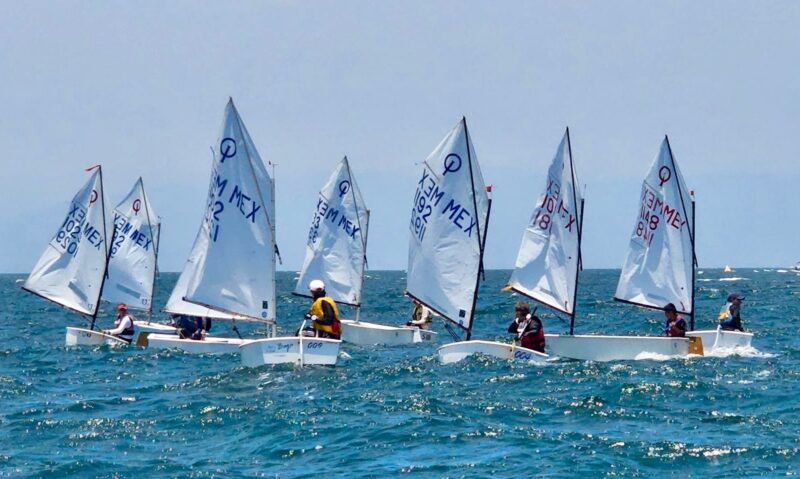
Jorge, who is 30 years old and works as an engineer, explained that in Mexico, the majority of junior sailing is concentrated in the south in cities like Puerto Vallarta and Cancún. But there’s very little youth or dinghy sailing in the north of the country. Despite its isolation and humble roots, Asociación de Vela has official status. “We are in the federation of Mexico Sailing — we pay our annual fees to be recognized as an association.”
Still, there’s room for growth.
“My personal goal is to establish a permanent Laser fleet for masters and kids, having real races, and making it a real thing.” Frondo wants to establish perpetual trophies, and have more races in general, rather than the few races a year at no more than three locations across the very large country that is Mexico.
“We did a fundraiser regatta a few weeks ago and had 13 boats race around the island of Todos Santos in 20-plus miles of open-ocean sailing,” Frondo said. “It was the biggest dinghy race in Northern Baja, maybe ever. León won the regatta; I got second in the mixed-adult-and-kid fleet. I’m still sore,” Frondo added.
“We are growing,” Frondo said. “We’re not Mission Bay Yacht Club, but we’re growing.
If you have spare equipment, supplies, boats, gear, money, etc., that you’d like to donate to Asociación de Vela, please contact them via their Instagram: @velabajacalifornia. Or you can contact Jorge Kornegay here.
Haven Boatworks: Full Service Boatyard in Port Townsend
Coyotes on Angel Island? And They’re Mulitplying
To our knowledge, coyotes don’t live on Angel Island. Deer, raccoons, other small animals and rodents? Sure. We’ve all seen some of those. But coyotes? That’s a new idea. But according to an article in Bay Nature, coyotes have inhabited the island since around 2017. The story refers to a sighting by a California State Parks (CSP) employee who said she saw a coyote “on the lawn of the Parks staff residences.” Her claim was dismissed, until another employee said he saw one scampering off into the bushes as he rounded a corner on his bike. Within a year of this second sighting, Parks employees began hearing the coyotes. And, as often happens, this news brought more information to light.
Ashley Kristensen, operations manager at the Angel Island-Tiburon Ferry, told about seeing coyotes swimming across Raccoon Strait. Similarly, ferry captain Aaron Swerkes said he has “seen coyotes in the strait just a couple times since his first sighting about a decade ago.” And in June 2020, Angel Island State Park wrote a social media post saying “Yes, there are now TWO coyotes on the island now!”
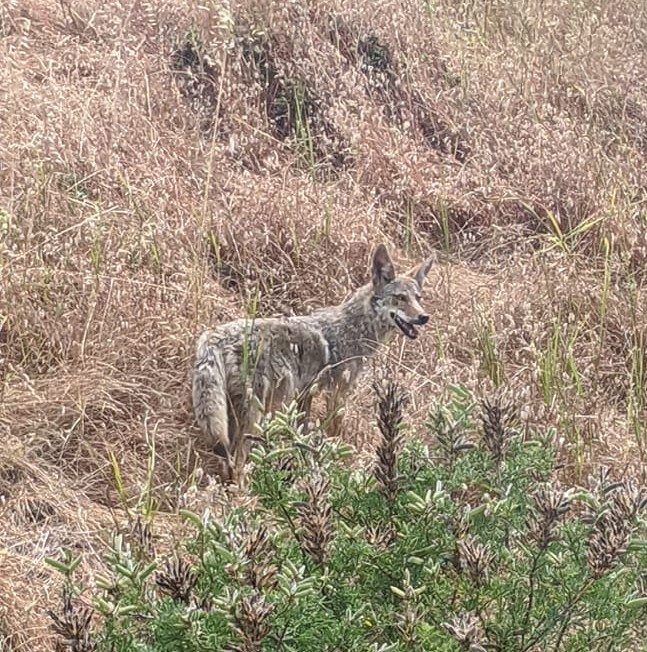
At that time, it was unknown if the two were a mating pair. As nature would have it, they were. This is where the timing of events is a little uncertain. The Bay Nature article says a litter of coyote pups appeared in 2019. Regardless of when it occurred, the arrival and subsequent multiplication of Canidae is causing a change in the island’s ecosystem.
“Around the time the last ferry left, the deer would come and hang out on the lawn in the visitor’s center,” State Parks interpreter Casey Dexter-Lee told Bay Nature. “Now, they aren’t in this open space as much and are a bit more cautious.” And in confirmation of the coyotes’ actions, Bill Miller, a CSP environmental scientist, says he has found a deer hoof in a coyote scat. Dexter-Lee also said that since the litter of coyotes appeared, “Parks staff have not witnessed any deer grow into adulthood.”
What does this all mean for the future of Angel Island’s ecosystem? Initially it appears the coyotes are preying on sick and injured animals and young fawns, thereby reducing the deer population and potentially reducing the damaging effects the deer have had on the island’s natural vegetation. But deer aren’t the only animals on the menu. There is a real concern for the Angel Island mole, a subspecies of mole that is found only on Angel Island.
To get a better picture of the situation, the California Department of Fish and Wildlife has begun collecting coyote scat and installing wildlife cameras “to determine their genetics, diets, and movements.” They hope to provide estimates of the deer and coyote populations within the coming year.
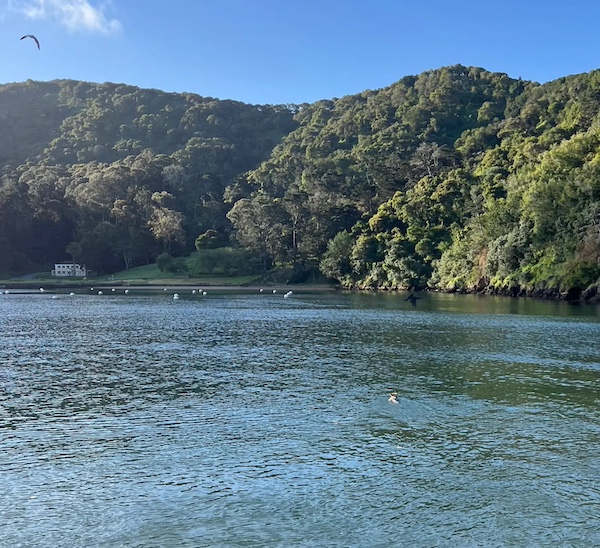
In the meantime, let us know if you’ve seen coyotes on the island or swimming the strait.
‘Blue Flash’s Pacific Cup — Lions of the Sea
I learned from my “TransBack” experience (bringing Merlin back from the ’23 Transpac) that being in the right place at the right time is half the battle when taking advantage of unique opportunities. So when I added my name to the list of available crew for the 2024 Pacific Cup, I figured I’d let the universe determine what the next move would be.
Matt Arno from the Fort Worth Boat Club in Texas reached out with his J/105 ambitions for this race, and laid out his plan: trailer Blue Flash from Texas, step the mast at KKMI in Richmond, win the Pacific Cup, put the little boat on a bigger boat, ship the boat back on the other boat to the mainland, and drive it back to Texas.
Sounds good, solid plan, let’s do this.
The Blue Flash team would consist of four sailors: the skipper, Matt Arno, a nuclear physicist; his first mate and watch captain, Scott Hurst, a software developer hailing from New Jersey; Grant Hayes, retired, a Bay Area racing veteran and Alameda local; and myself, a sailing addict and native of San Jose, employed as a project manager for a large electrical contractor.
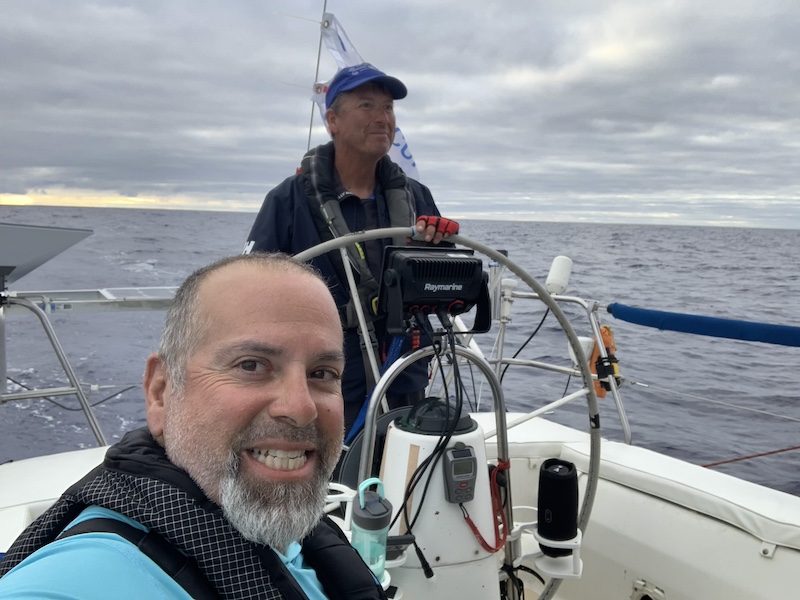
Although the four of us lacked time on the water together due to geographic differences, we did make time to meet, practice, and evaluate our racing chemistry. We had a short fuse before race day and a lot of ground to cover. Matt and Scott brought strong offshore heavy-wind experience and knowledge. Grant and I had local racing experience, connections, and knowledge. We would really need to focus only on supporting their program once outside the Golden Gate.
The boat arrived with little time to spare. (Getting from Texas to Richmond would cost six tires, two rims, and a hog.) Setup went smoothly at KKMI due to the skipper’s prior experiences racing out of town.
A faulty alternator almost dashed our race dreams — it was a special one with a special pulley and belt. Solar-only was an option but would require an uncomfortable power diet. We were saved by a local vendor, Buchanan Auto Electric in Oakland, who expedited our rebuild and handed us a sparkling new high-performance alternator.
With seconds to spare, Blue Flash was ready for battle.

